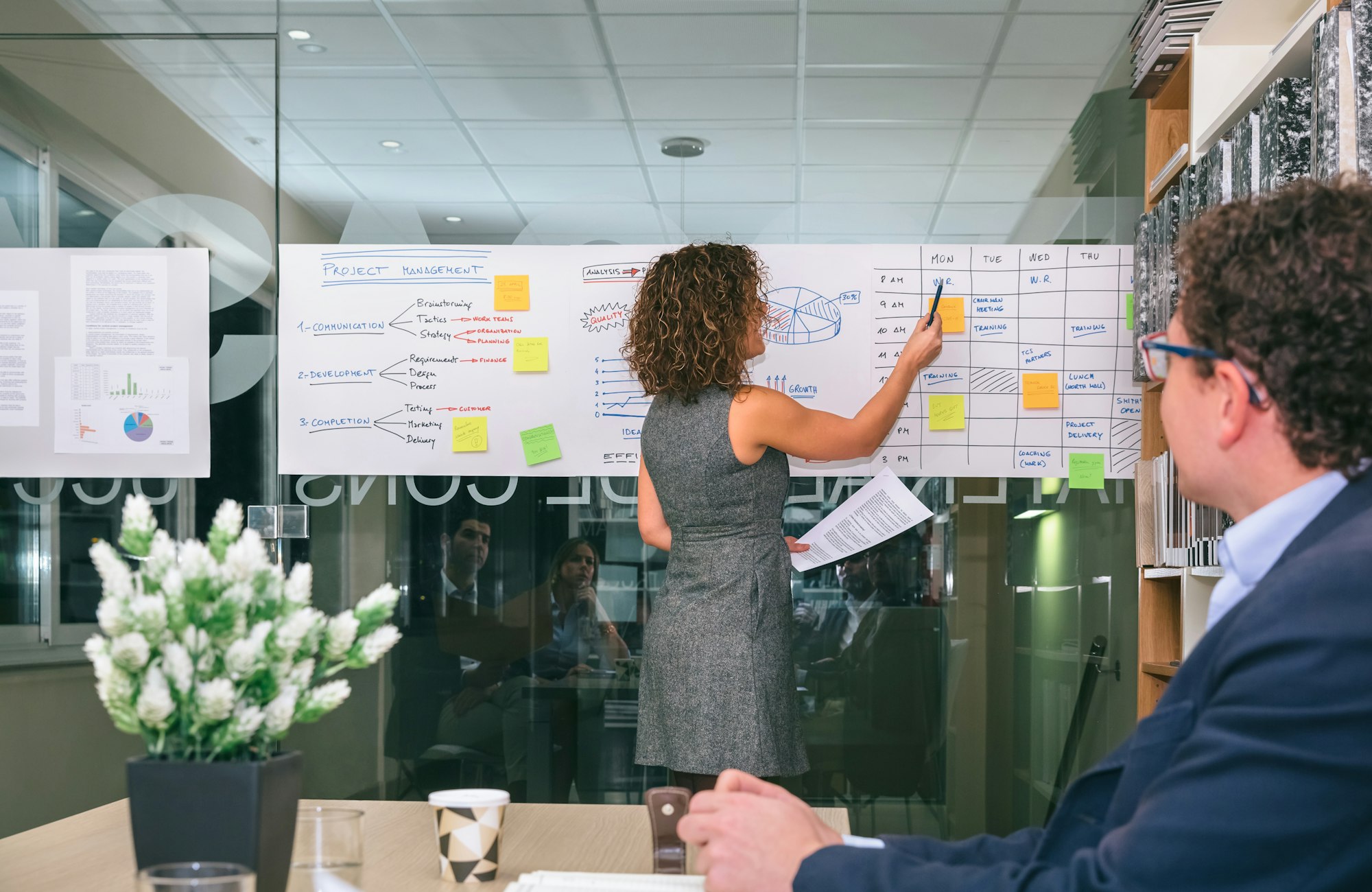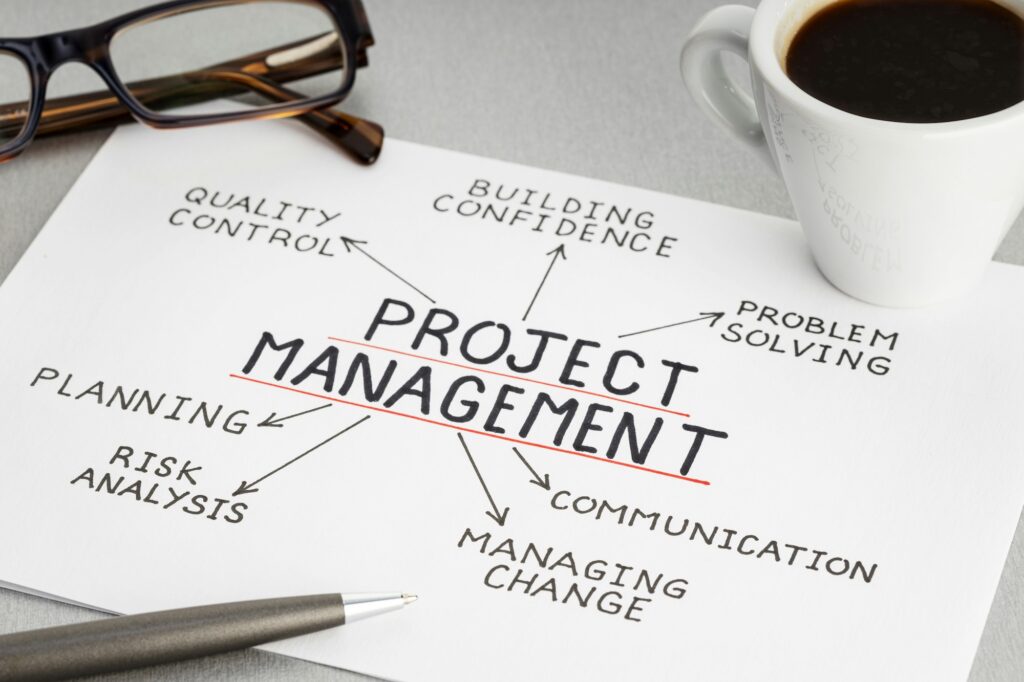
Have you ever felt overwhelmed by the complexity of managing multiple projects at once? Lean project management might just be the game-changer you need.
Rooted in the principles of Lean manufacturing, this methodology focuses on maximizing value while minimizing waste.
Whether you’re a seasoned project manager or just starting out, understanding and implementing Lean project management can streamline your processes and boost your productivity.
Think of Lean project management as a way to cut through the noise and zero in on what truly matters. According to the Lean Enterprise Institute, the core idea is simple:
“Deliver value from your customer’s perspective, eliminate waste, and continuously improve your processes.”
It’s more than just a set of tools—it’s a mindset and a disciplined approach to managing your projects. Curious to learn more? Let’s dive into the key principles and best practices that can transform how you manage projects.

Understanding the key principles of Lean Project Management is pivotal for anyone looking to optimize their project workflows.
These principles, when effectively applied, can significantly enhance project outcomes by streamlining processes and minimizing wastage.
Identify Value: The first principle is to clearly define what constitutes value for the customer.
This involves understanding the customer’s needs and requirements, thus ensuring that every activity in the project is centered around delivering maximum value.
Map the Value Stream: Once value is identified, the next step is to map out the entire process that delivers this value.
This “value stream” mapping helps in visualizing all the steps involved, from concept to delivery, and identifying any non-value-adding activities that can be minimized or eliminated.
Make Value Flow: Creating a smooth workflow without interruptions or delays is crucial. The idea is to ensure that the project processes flow seamlessly, thereby reducing bottlenecks and enhancing efficiency.
Let Customers Pull Value: Instead of pushing products or services to the customer, Lean Project Management encourages a “pull” approach.
This means that processes are initiated based on customer demand, ensuring resources are used efficiently and waste is minimized.
Embrace Continuous Improvement: Also known as “Kaizen,” this principle focuses on the continuous pursuit of perfection.
It’s about creating a culture where team members are always looking for ways to improve processes, reduce waste, and enhance value delivery.
By adhering to these five key principles, you can transform your project management approach, creating an agile, efficient, and customer-focused process that drives success.
To excel in lean project management, integrating a few fundamental best practices is crucial. These practices help in creating a streamlined and efficient project flow, thus amplifying the chances of success.
Prioritize activities that deliver the highest value to your customers. Start by clearly defining what constitutes value from the customer’s perspective and align your project’s goals accordingly.
Constantly ask yourself, “Is this step adding value?” and adjust your processes to maximize impactful deliverables.
Identify every step in your project process and map them out. By visualizing the entire value stream, you can pinpoint bottlenecks and areas of waste.
The goal is to ensure that every part of the project is contributing to the creation of value without unnecessary steps.
Waste is the antithesis of lean. Continuous scrutiny and assessment are essential to identify and eliminate non-value-adding activities.
The seven types of waste in lean (overproduction, waiting, transport, extra processing, inventory, motion, and defects) offer a framework to systematically reduce inefficiency.
Your team is your greatest asset. Empowering them to make decisions and take ownership of their tasks leads to improved morale and productivity.
Cultivate an environment of trust where team members feel comfortable providing input and suggesting improvements.
Adopt a culture of continuous improvement. Regularly review and assess your processes, and encourage your team to think creatively about how to make small, incremental changes that accumulate to substantial improvements over time.
Leverage specific lean tools like Kanban boards, Gemba walks, and root cause analysis techniques to enhance your project management processes. These tools help you visualize work, understand ongoing issues, and develop effective solutions.
Finally, track your performance metrics rigorously. Understand key performance indicators (KPIs) that align with your project’s goals and use data to drive decision-making.
Be flexible and ready to adapt your approach based on the insights you gather.
Implementing these best practices requires dedication and a shift in mindset, but the rewards in terms of efficiency, productivity, and customer satisfaction are well worth the effort.

Lean Project Management in your organization can revolutionize how projects are approached and executed.
The key is to introduce lean principles gradually and consistently while ensuring that everyone on your team understands and embraces the core values.
Start with Education: Begin by educating your team on the principles of Lean Project Management. Knowledge is power, and understanding the ‘why’ behind lean can motivate your team to adopt new methodologies enthusiastically.
Consider workshops, training sessions, and sharing relevant resources to build foundational knowledge.
Assess Current Processes: Conduct a thorough assessment of your current project management processes. Identify areas of waste, inefficiencies, and bottlenecks. This will be your baseline from which improvements can be made.
Engage and Empower Your Teams: Lean Project Management emphasizes the importance of team empowerment. Encourage team members to contribute ideas for process improvements and actively involve them in decision-making.
A collaborative environment fosters innovation and accountability.
Pilot Projects: Before a full-scale implementation, select a few projects to apply lean principles. This allows you to experiment, gather feedback, and refine your approach.
Utilize tools such as Kanban boards, the 5S methodology, and value stream mapping to manage these projects effectively.
Regular Reviews and Retrospectives: Establish a routine of regular project reviews and retrospectives.
Continuous improvement (Kaizen) is a cornerstone of lean, and these sessions provide opportunities to discuss what is working, what isn’t, and how processes can be further refined.
Measure and Adapt: Use metrics and KPIs to track the performance of lean initiatives. Measure aspects like cycle time, lead time, and quality to understand the impact of lean practices.
Be prepared to adapt strategies based on data-driven insights.
Implementing Lean Project Management is not a one-size-fits-all process; it requires customization and adaptability to fit your unique organizational context.
By steadily embedding lean principles into your projects, you can achieve significant gains in efficiency, quality, and customer satisfaction.
Understanding the core principles of Lean Project Management helps you create a more efficient, productive work environment. Here’s an overview of these foundational principles:
1. Specify Value: The first step is to clearly define what value means to your customer. This involves understanding your client’s needs and identifying the critical elements that bring value to the project.
By honing in on what adds value, you can focus your efforts and resources more effectively.
2. Map the Value Stream: Once you know what value you are trying to deliver, the next step is to map all the steps involved in delivering that value.
This process, known as value stream mapping, helps you visualize the workflow and identify any processes that do not contribute to the overall value.
3. Eliminate Waste: In Lean Project Management, waste is defined as any activity that does not add value. Common types of waste include overproduction, waiting, unnecessary transport, extra processing, excessive inventory, and defects.
By identifying and eliminating these types of waste, you create a leaner, more efficient process.
4. Ensure Continuous Flow: The goal here is to create a project environment where work flows seamlessly from one stage to the next.
Bottlenecks and interruptions can hinder progress and lead to inefficiencies. Focusing on continuous flow ensures that your team can work more productively and deliver results more quickly.
5. Implement Pull Systems: Instead of pushing work through the process, Lean Project Management emphasizes pulling work based on customer demand.
This means that work is only done when there is a need for it, preventing overproduction and reducing waste.
6. Pursue Perfection: Lean Project Management is built on the principle of continuous improvement. This involves constantly seeking ways to improve processes, reduce waste, and enhance value.
Regular reviews and feedback loops are essential for fostering a culture of ongoing improvement.
By adhering to these core principles, you can transform your project management practices, ensuring that every effort contributes directly to value creation and continuous improvement.

Continuous improvement, often referred to as Kaizen, is at the heart of Lean Project Management.
The essence of Kaizen lies in its ability to create a culture where all team members are actively engaged in identifying opportunities for improvement. But how exactly does this translate into actionable steps in your projects?
First, you need to cultivate a mindset that welcomes change and seeks feedback. Encourage your team to voice their ideas and suggestions regularly.
This could be through daily stand-up meetings or suggestion boxes. The goal is to make continuous improvement a part of your team’s DNA.
Instead of waiting for a major overhaul, focus on making small, incremental changes. This not only makes the process less daunting but also allows for quick wins that can boost team morale.
For instance, if a particular workflow seems inefficient, tweak a single step rather than revamping the entire process.
Plan-Do-Check-Act (PDCA) cycles are a cornerstone of continuous improvement. This method involves planning a change, implementing it on a small scale, checking the results, and then acting based on what you’ve learned.
This iterative approach ensures that improvements are both effective and sustainable.
Data is your best friend when it comes to continuous improvement. Use KPIs and other relevant metrics to measure the impact of changes.
Are you seeing faster delivery times? Is customer satisfaction improving? Data helps you make informed decisions and track progress over time.
Kaizen flourishes in a collaborative environment. Facilitate teamwork and open communication channels. Cross-functional teams can bring in diverse perspectives, making it easier to spot inefficiencies and brainstorm solutions.
Remember, continuous improvement is not a one-time effort but an ongoing journey. By embedding these practices in your daily operations, you create a dynamic, adaptable organization that’s always striving for excellence.
This not only boosts project performance but also contributes to overall organizational growth.
Waste in projects can come in many forms, and identifying them is the first step toward effective lean project management. Common types of waste include unnecessary meetings, overproduction, waiting times, excessive motion, and defects.
By closely examining your project processes, you can pinpoint these areas and take decisive actions.
Start by evaluating the value stream. Value stream mapping is a powerful tool that helps you visualize the entire process flow from start to finish.
Identify every step and determine whether it adds value. If a step does not contribute to the final value, it is considered waste and should be eliminated or improved.
Engage your team in identifying waste. Often, the people involved in the day-to-day tasks have the best insights into inefficiencies.

Encourage open communication and foster an environment where team members feel comfortable sharing their observations. Conduct regular retrospectives to gather feedback and make adjustments.
The next step is to implement just-in-time (JIT) practices. JIT is about delivering the right amount of resources at the right time, thereby reducing excess inventory and minimizing storage costs.
It ensures that resources are only used when absolutely necessary, avoiding overproduction and idle resources.
Another effective method is to apply the 5S methodology:
Finally, track your performance metrics. Use data to identify trends and inefficiencies in your processes. Regularly review these metrics and adapt your strategies as necessary.
This continuous cycle of measuring and adapting is crucial to maintaining a lean project environment.
By following these steps, you can identify and reduce waste effectively, paving the way for a more streamlined and efficient project management process.
Remember, the goal is to maximize value by minimizing waste, ultimately leading to greater success and customer satisfaction.
Lean project management focuses on maximizing value by eliminating waste and optimizing processes, whereas traditional project management often emphasizes completing tasks according to a pre-set plan.
Lean practices emphasize continuous improvement, value stream mapping, and team empowerment, leading to greater efficiency and flexibility. In contrast, traditional project management tends to rely more on rigid structures and timelines.
Lean project management offers numerous benefits, including:
Success in lean project management can be measured using several key performance indicators (KPIs), such as:
Adopting lean project management can present several challenges, including:
Yes, lean project management can be applied across various industries.
Originally developed for manufacturing, lean principles and techniques have proven effective in sectors such as software development, healthcare, construction, and services.
The focus on value, waste elimination, and continuous improvement makes lean project management versatile and adaptable to different environments and project types.
Embracing Lean Project Management can be a transformative step for your organization.
By focusing on core principles like value, continuous improvement, and waste reduction, you can significantly increase efficiency and achieve better project outcomes.
Remember, it’s not just about implementing tools and techniques—it’s about fostering a mindset and culture that continually strives for perfection.
Start Small: Begin with a few projects to test Lean methodologies. Track your progress and gather data to showcase the benefits to your team and stakeholders.
Empower Your Team: Foster an environment where team members feel valued and encouraged to contribute their ideas for improvement. Your people are your most valuable asset in Lean project management.
Commit to Continuous Learning: Keep evaluating and refining your processes. Lean is about the journey, not the destination. Stay curious and adaptive to change, and keep learning from every project you undertake.
Achieving success with Lean Project Management may require a paradigm shift, but the rewards are well worth the effort.
By integrating these principles into your project approach, you’ll enhance your organization’s competitive advantage and drive sustainable success.



